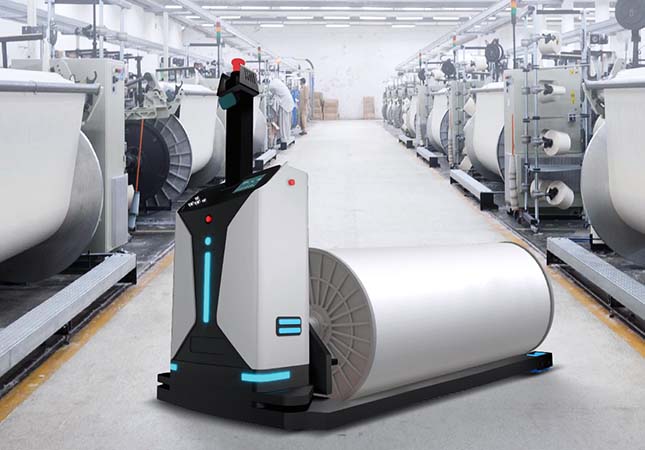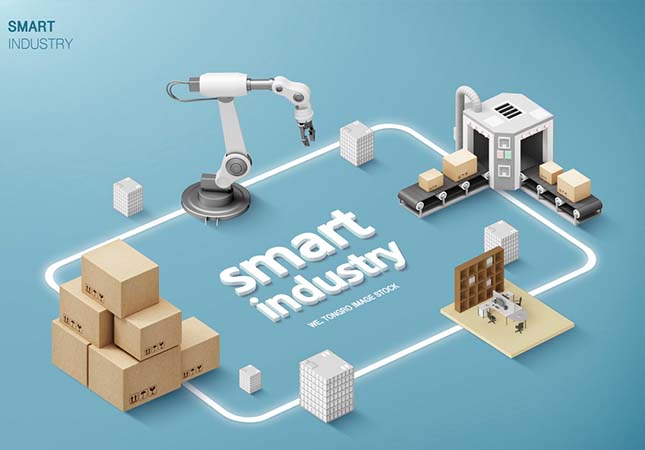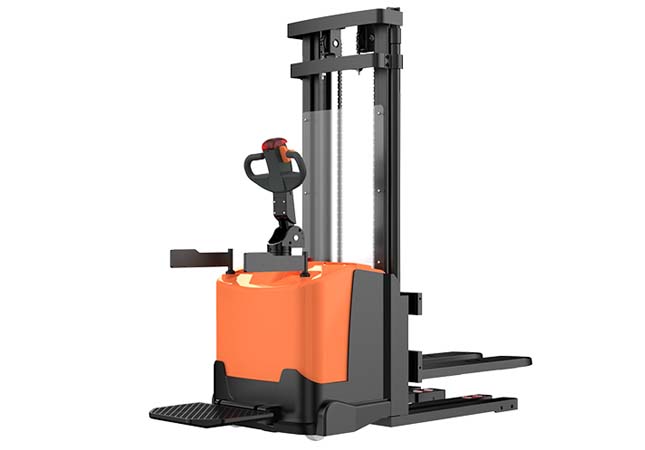Although China's stacker industry has experienced a decade of rapid growth, currently, Chinese electric stackers not only have great development potential in the international market but also in the domestic market. Meanwhile, competition in the domestic electric stacker market is intensifying, as foreign warehousing giants have already occupied the high-end market and are starting to pay attention to the mid-to-low-end electric stacker market. In China, where logistics started late and logistics equipment has great potential, the demand for electric stackers will grow exponentially in the future. In the face of the electric stacker market, domestic enterprises in our country face both opportunities and significant challenges.

Future Insights of Electric Stacker
1. Systematization
The systematization of electric stackers is an important trend in their development. Foreign renowned companies are gradually realizing the serialization of their products, forming a range of electric stackers of different sizes and models, all centered around the core function of lifting and stacking. Simultaneously, the product update cycle has significantly shortened.
2. Specialization
The establishment of automated warehousing centers and large-scale logistics distribution centers has stimulated the demand for material handling and stacker machinery in the market. At the same time, the domestic electric stacker industry has shown a diversified landscape, with various manufacturers competing to reduce production and sales costs, while improving service quality. As online sales begin to enter the more traditional machinery industry, a culture of professionalism has emerged in the electric stacker industry.
3. Intellectualization
The electric stacker market will also enter the era of technological competition, with advanced information processing and recognition technologies being increasingly applied in the R&D process of electric stackers. In the future, information processing capabilities will be implemented, achieving perfect integration between electric stacker operations and computer management, truly realizing the goal of efficient warehousing logistics.

4. Energy Conservation & Environmentalization
Domestic electric stackers can be classified based on their power source as either internal combustion stackers or electric stackers. Internal combustion stackers are powered by internal combustion engines, which have powerful output and a wide range of applications. However, their emissions and noise pollution are significant, posing a considerable threat to human health. Energy conservation and environmental protection will be one of the main themes in the future. The focus will mainly be on reducing engine emissions, improving hydraulic system efficiency, and reducing vibration and noise. It can be confirmed that electric stackers with low emissions and low noise will undoubtedly dominate the entire electric stacker market in the future. Environmentally friendly electric stackers such as fully electric stackers, natural gas electric stackers, and liquefied petroleum gas electric stackers will undoubtedly become the main theme of future electric stackers.
5. Securitization & Comfortableness
Safety mainly refers to the requirement of safety during use, as well as convenient and comfortable operation, which is the humanized requirement for future use of robots. Safety is also the most basic requirement for completing stacking operations.
Global Industrial Status of Electric Stackers
The international stacker industry is a vast and diversified market, encompassing many different types and sizes of enterprises.
l Market size: According to market research firms, the global stacker market is estimated to be around $6 billion and is expected to maintain stable growth in the coming years.
l Major markets: The major markets for stackers include Europe, North America, and the Asia-Pacific region. Among them, the Chinese market is growing rapidly and has become the largest stacker market globally.
l Major manufacturers: Major stacker manufacturers in the market include Toyota, Hitachi, Caterpillar, and TCM, all of which have extensive sales networks and service support systems worldwide.
l Technological development: With the continuous development of automation and the Internet of Things (IoT) technology, stacker manufacturers are increasingly focusing on product intelligence and automation to improve efficiency and reduce costs.
l Competitive landscape: Due to the large market size, the competitive landscape is complex. In the market, the competition among different types and sizes of enterprises is increasingly fierce, and companies need to improve their product quality and service levels to maintain market share.
WIth the development of the logistics industry and the application of automation technology, the stacker market will continue to grow and present more diversified and intelligent trends.
Global Economic Situation of Electric Stacker
1. Market Size
According to market research data from a research firm, the global stacker market has grown from $5.3 billion in 2018 to $6 billion in 2021, and is expected to reach $6.9 billion by 2025. This growth is primarily driven by the development of the logistics industry and the promotion of automation technology.
2. Market Growth
With the continued development of the logistics industry and the application of automation technology, the stacker market will continue to maintain stable growth. At the same time, the increasing demand for environmental protection will also drive the growth of the stacker market, as electric stackers are more environmentally friendly than fuel-powered stackers.
3. Major Markets
The global stacker market mainly includes Europe, North America, and the Asia-Pacific region. Among them, the Asia-Pacific region is the fastest-growing market, as China's economic development and rapid growth of the logistics industry have brought significant growth to the stacker market.
4. Major Manufacturers
The major manufacturers in the global stacker market include Toyota, Hitachi, Caterpillar, and Toledo. These companies have a wide sales network and service support system worldwide.
5. Technological Development
With the continuous development of automation and Internet of Things (IoT) technology, stacker manufacturers are increasingly focusing on the intelligence and automation level of their products to improve efficiency and reduce costs. stackers with higher levels of automation will become a trend in the future, as they can control, navigate, and transport goods through automated control systems.
6. Competitive Landscape
Due to the large market size, the competitive landscape is quite complex. In the market, competition between enterprises of different types and scales is becoming increasingly fierce, and companies need to improve their product quality and service level to maintain market share.
With the continued development of the logistics industry and the application of automation technology, the stacker market will continue to grow and show a more diverse and intelligent trend. At the same time, competition will become more intense, and companies need to continuously improve their product quality and service level to maintain a competitive advantage.
SUNTECH Electric Stacker(ST-MBT-10)
The ST-MBT-10 Electric Stacker is a versatile and user-friendly solution for a variety of applications. Whether in shops, factories, or small stores, this fully powered stacker delivers impressive performance despite its compact size. Additionally, it can be tailored to specific requirements for loading, carrying capacity, and lifting height.

One of the standout features of the ST-MBT-10 is its double lift cylinder design, which ensures precise and smooth lifting. The wide-view mast design is also unique, providing operators with a clear and unobstructed view. Safety is also prioritized, as an explosion-proof valve at the bottom of the cylinder prevents rapid descent in the event of a pipe burst.




